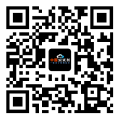详细说明
Species Reactivity
Rat
Specificity
Detects rat 4-1BB in direct ELISAs.
Source
Polyclonal Goat IgG
Purification
Antigen Affinity-purified
Immunogen
Mouse myeloma cell line NS0-derived recombinant rat 4-1BB.
Formulation
Lyophilized from a 0.2 μm filtered solution in PBS with Trehalose. *Small pack size (SP) is supplied as a 0.2 µm filtered solution in PBS.
Label
Unconjugated
Applications
Recommended
ConcentrationSample
Flow Cytometry
0.25 µg/10 6 cells
See below
CyTOF-ready
Ready to be labeled using established conjugation methods. No BSA or other carrier proteins that could interfere with conjugation.
Immunocytochemistry
5-15 µg/mL
See below
Please Note: Optimal dilutions should be determined by each laboratory for each application. are available in the Technical Information section on our website.
Data Examples
Flow Cytometry | Detection of 4‑1BB/TNFRSF9/CD137 in Rat Splenocytes by Flow Cytometry. Rat splenocyteseither (A) resting or (B) activated with with 50 ng/mL PMA and 200 ng/mL Calcium Ionomycin overnight were stained with Goat Anti-Rat 4‑1BB/TNFRSF9/CD137 Antigen Affinity-purified Polyclonal Antibody (Catalog # AF9029) followed by Phycoerythrin-conjugated Anti-Goat IgG Secondary Antibody (Catalog # ) and APC-conjugated Anti-Rat CD3. Quadrant markers were set based on control antibody staining (Catalog # ). View our protocol for . |
Immunocytochemistry | 4‑1BB/TNFRSF9/CD137 in Rat Splenocytes. 4‑1BB/TNFRSF9/CD137 was detected in immersion fixed rat splenocytes treated with calcium ionomycin and PMA using Goat Anti-Rat 4‑1BB/TNFRSF9/ CD137 Antigen Affinity-purified Polyclonal Antibody (Catalog # AF9029) at 15 µg/mL for 3 hours at room temperature. Cells were stained using the NorthernLights™ 557-conjugated Anti-Goat IgG Secondary Antibody (red; Catalog # ) and counterstained with DAPI (blue). Specific staining was localized to cytoplasm. View our protocol for . |
Preparation and Storage
Reconstitution
Reconstitute at 0.2 mg/mL in sterile PBS.
Shipping
The product is shipped at ambient temperature. Upon receipt, store it immediately at the temperature recommended below. *Small pack size (SP) is shipped with polar packs. Upon receipt, store it immediately at -20 to -70 °C
Stability & Storage
Use a manual defrost freezer and avoid repeated freeze-thaw cycles.
12 months from date of receipt, -20 to -70 °C as supplied.
1 month, 2 to 8 °C under sterile conditions after reconstitution.
6 months, -20 to -70 °C under sterile conditions after reconstitution.
Background: 4-1BB/TNFRSF9/CD137
4‑1BB, also known as CD137 and TNFRSF9, is an approximately 30 kDa transmembrane glycoprotein in the TNF receptor superfamily. 4‑1BB functions in the development and activation of multiple immune cells (1). Mature rat consists of a 166 amino acid (aa) extracellular domain (ECD) with four TNFR cysteine‑rich repeats, a 21 aa transmembrane segment, and a 48 aa cytoplasmic domain. Within the ECD, rat 4‑1BB shares 60% and 79% aa sequence identity with human and mouse 4‑1BB, respectively. 4‑1BB is expressed as a disulfide‑linked homodimer on various populations of activated T cells including CD4 +, CD8 +, memory CD8 +, NKT, and regulatory T cells (2‑5) as well as on myeloid and mast cell progenitors, dendritic cells, mast cells, and bacterially infected osteoblasts (6‑9). It binds with high affinity to the transmembrane 4‑1BB Ligand/TNFSF9 which is expressed on antigen presenting cells and myeloid progenitor cells (6, 10). This interaction co‑stimulates the proliferation, activation, and/or survival of the 4‑1BB expressing cell (2‑5, 10). It can also enhance the activation‑induced cell death of repetitively stimulated T cells (10). Mice lacking 4‑1BB show augmented T cell activation, perhaps due to its absence on regulatory T cells (11). 4‑1BB can associate with OX40 on activated T cells, forming a complex that responds to either ligand and inhibits Treg and CD8 + T cell proliferation (12). Reverse signaling through 4‑1BB Ligand inhibits the development of dendritic cells, B cells, and osteoclasts (6, 9) but supports mature dendritic cell survival and co‑stimulates the proliferation and activation of mast cells (7, 8). 4‑1BB activation enhances CD8 + T cell and NK cell mediated anti‑tumor immunity (13). It also contributes to the development of inflammation in high fat diet‑induced metabolic syndrome (14). Soluble forms of 4‑1BB and 4‑1BB Ligand circulate at elevated levels in the serum of rheumatoid arthritis and hematologic cancer patients, respectively (15, 16).
References:
Wang, C. et al. (2009) Immunol. Rev. 229:192.
Wen, T. et al. (2002) J. Immunol. 168:4897.
Pulle, G. et al. (2006) J. Immunol. 176:2739.
Zheng, G. et al. (2004) J. Immunol. 173:2428.
Kim, D. et al. (2008) J. Immunol. 180:2062.
Lee, S. et al. (2008) Nat. Immunol. 9:917.
Choi, B.K. et al. (2009) J. Immunol. 182:4107.
Nishimoto, H. et al. (2005) Blood 106:4241.
Saito, K. et al. (2004) J. Biol. Chem. 279:13555.
Alderson, M.R. et al. (1994) Eur. J. Immunol. 24:2219.
Lee, S. et al. (2005) J. Immunol. 174:6803.
Ma, B.Y. et al. (2005) Blood 106:2002.
Choi, B.K. et al. (2010) J. Immunol. 185:1404.
Kim, C. et al. (2011) Diabetes 60:3159.
Michel, J. et al. (1998) Eur. J. Immunol. 28:290.
Salih, H.R. et al. (2001) J. Immunol. 167:4059.
Entrez Gene IDs:
3604 (Human); 21942 (Mouse); 500590 (Rat); 102127961 (Cynomolgus Monkey)
Alternate Names:
4-1BB ligand receptor; 41BB; 4-1BB; CD137 antigen; CD137; CD137MGC2172; CDw137; FLJ43501; ILA; ILAhomolog of mouse 4-1BB; induced by lymphocyte activation (ILA); interleukin-activated receptor, homolog of mouse Ly63; receptor protein 4-1BB; T cell antigen ILA; T-cell antigen 4-1BB homolog; T-cell antigen ILA; TNFRSF9; tumor necrosis factor receptor superfamily member 9; tumor necrosis factor receptor superfamily, member 9










 粤公网安备44196802000105号
粤公网安备44196802000105号